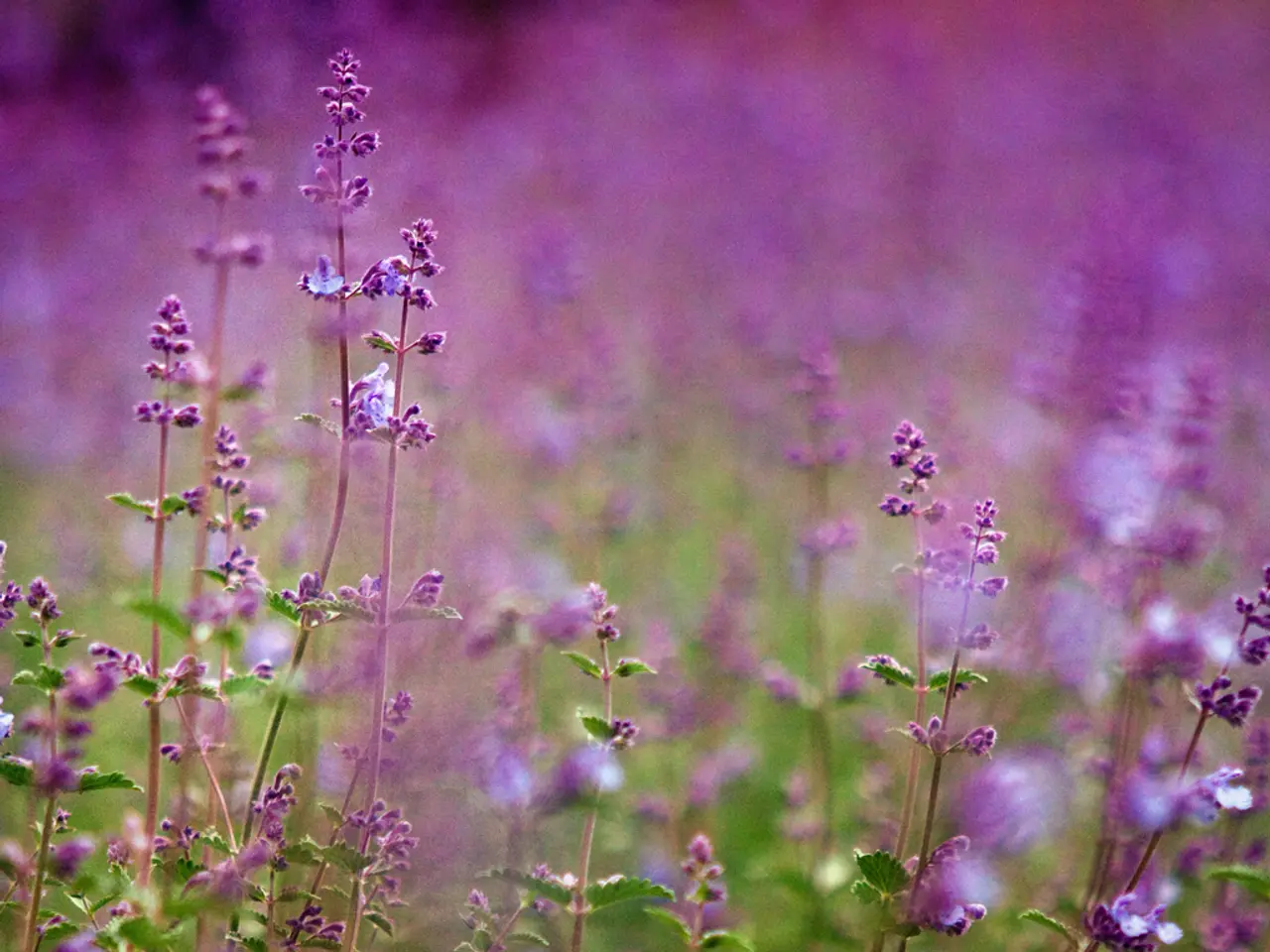Revitalizing Wilted Lavender Shrubs: A Guide
In the world of gardening, one plant that holds a special place is lavender. Known for its beautiful purple blooms and calming scent, it's a favourite among many. However, caring for lavender in pots can present its own set of challenges. This article aims to address common issues and provide solutions for maintaining healthy potted lavender plants.
One of the most common causes for a dying lavender plant is overwatering. When water is abundant, roots can rot, leading to plant decline. To prevent this, use a sandy, well-draining soil mix in pots. You can achieve this by mixing sand or gravel into regular potting soil to improve drainage and prevent water from accumulating at the roots.
Another crucial factor is sunlight. Lavender thrives in dry, well-draining, sandy soil and needs lots of direct sunlight, ideally 6+ hours daily, to stay healthy. Ensure your lavender plant receives ample direct sunlight, either in a south-facing window or outdoor spot.
Proper watering is also essential. Soak the soil well and then allow the top inch to dry out completely before watering again. Overwatered lavender may have yellowing leaves, initially on the lower leaves, drooping, a rotting odor, and sodden soil. On the other hand, underwatered lavender will droop and the soil will feel completely dried out.
Good drainage is key to a healthy lavender plant. Ensure the pot has drainage holes and that water does not just run out immediately or pool inside. Retaining some moisture without saturation helps survival.
Pruning lavender appropriately is also important. Restrain from excessive flower bud pruning in the first year to encourage root growth, and prune aggressively at the end of the growing season to promote healthy regeneration.
If root rot is suspected, remove the plant from its pot, check the roots, and prune any damaged or rotted roots before repotting in fresh well-draining soil. Avoid overly rich or compacted soils, as lavender prefers a rocky, dry bed that drains quickly to mimic its natural Mediterranean environment.
Growing lavender in pots has its own set of special considerations. Be aware of potential over or underwatering, inconsistent soil, too much sunlight, or the need for fertilization. By addressing these factors—well-draining soil, proper watering, adequate sunlight, and good pruning—you can revive and maintain healthy potted lavender plants.
In addition to these tips, it's essential to protect potted lavender from cold temperatures. When temperatures dip, move the plant into a garage, cover the plant, or mulch heavily. Mulch is available at Home Depot.
Remember, lavender is a plant native to the Mediterranean that requires well-draining soil with a pH of 6 to 8. A soil test can help determine if the pH needs adjusting, and a soil test kit can be bought on Amazon.
Lastly, be vigilant for common pests and diseases that affect lavender. Spittlebugs and froghoppers can suck the sap from lavender plants, and they can be detected by observing white, frothy blobs on the stems and leaves of infested plants. Septoria leaf spot is a disease caused by a fungus that weakens lavender plants in the late summer to early fall, and it is fostered by humid, wet conditions. Lavender shab is another fungal disease that results in twisted, brown stems along with tiny black dots on the stem. This disease is easily transmitted, so infected plants should be pulled out and destroyed.
With these tips in mind, you're now equipped to care for your potted lavender and enjoy its beautiful blooms for years to come. Happy gardening!
To maintain a healthy potted lavender plant, it's important to use a sandy, well-draining soil mix in pots and avoid overwatering. Additionally, lavender thrives in direct sunlight, ideally 6+ hours daily, so ensure your plant receives ample sunlight either in a south-facing window or outdoor spot.




